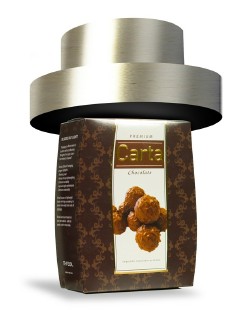Tests Confirm Lightweight Boards Can Be Used Without Compromising Quality
 Print this article | Send to Colleague Print this article | Send to Colleague
 M-real Consumer Packaging, Finland, has carried out box compression tests that uniquely study the performance of cartonboard packaging in real life situations such as stacking and palletizing. According to M-real, the tests have confirmed that lighter weight boards can be used without compromising the quality or performance of finished cartons, resulting in both cost savings and sustainability benefits as less raw material is required in their manufacture. M-real Consumer Packaging, Finland, has carried out box compression tests that uniquely study the performance of cartonboard packaging in real life situations such as stacking and palletizing. According to M-real, the tests have confirmed that lighter weight boards can be used without compromising the quality or performance of finished cartons, resulting in both cost savings and sustainability benefits as less raw material is required in their manufacture.
The studies, undertaken by an external research institute, performed box compression tests on dummy cartons. Results showed that the bending stiffness of a board shows the best correlation with the box compression strength. Higher bending stiffness improves the board's resistance to bulging and cracking, creating cartons with higher rigidity.
Good rigidity and high stacking strength are particularly needed when cartons are loaded onto pallets on top of each other, and secondary packaging, such as a corrugated case, is not being used. In such end uses it is vital to choose the right raw material for cartons.
M-real notes that grades with high bulk and optimized layer structures demonstrate very good stiffness for a given grammage. In a market where substance equals weight, and heavier weight equals higher cost, it becomes apparent that desirable carton rigidity can be achieved in tandem with cost savings. A better quality carton can decrease the amount of wasted products and even eliminate the need for slip sheets during stacking, saving the additional cost of using these altogether, the company explains.
Further box compression tests evaluated how different design elements, specifically carton dimension or board fiber direction and surrounding climate conditions, can affect carton strength. The results found that changing carton size—height and width of the side panels—had no notable effect on the BCT value, as it is the corners that bear most of the load.
Rotating fiber direction can, however, make a dramatic difference. Most cartons use horizontal fiber direction to improve runnability on the packaging lines and give more rigid feel when handled. But when fiber direction was changed to run parallel to compression, stacking strength was increased as much as 20%. This benefit has, however, to be weighed against the more usually accepted advantages of horizontal fiber direction mentioned above.
Finally, tests found that increasing the relative humidity of air lowers the strength of a board because it is made from a natural raw material—wood fibers. Both board and carton strength decreased when relative humidity rose from 50% to 80%. Box compression strength decreased 15% to 25%, depending on board grade. This is important to consider when cartons are exposed to humid conditions during transport or storage, M-real points out.
|

